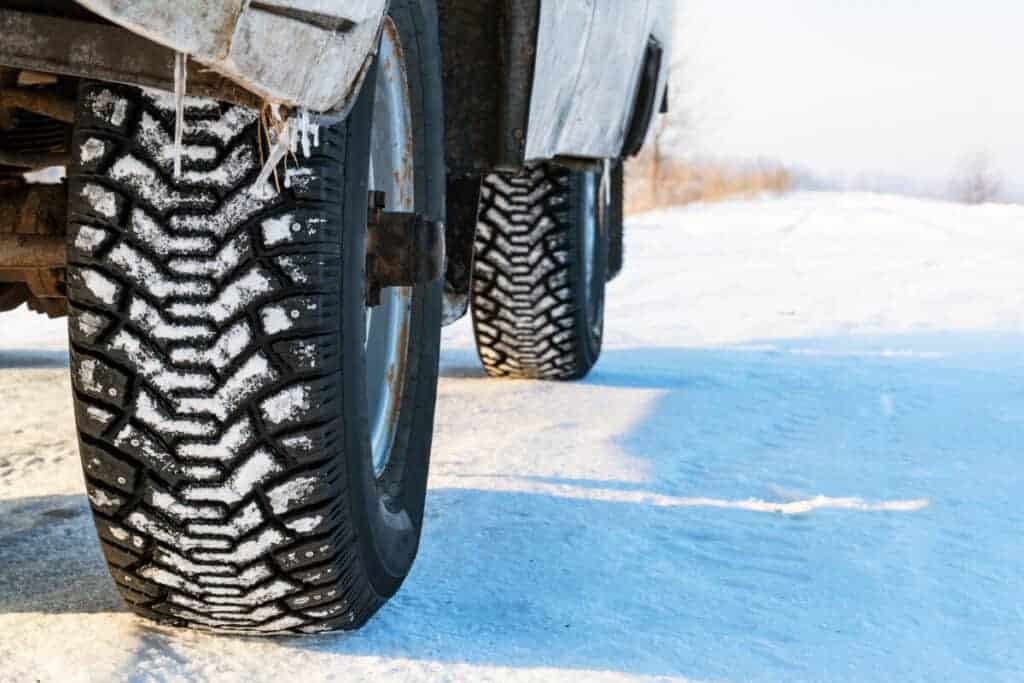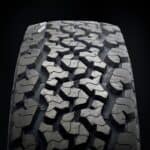Understanding Tire Ratings and Labels: A Guide to Decoding Terminology
Understanding tire ratings and labels is essential for every car owner. As someone who has had to replace tires multiple times, I know how confusing it can be to decode the terminology on the sidewall of a tire. However, understanding these ratings and labels is crucial for ensuring your safety on the road and getting the most out of your tires.

Tire ratings and labels provide valuable information about a tire’s performance, including its speed rating, load capacity, and treadwear rating. The speed rating indicates the maximum speed a tire can safely handle, while the load capacity tells you how much weight a tire can support.
The treadwear rating provides insight into how long a tire is expected to last before needing to be replaced. By understanding these ratings and labels, you can select the right tires for your vehicle and driving needs, and ensure that they are properly maintained for optimal performance.
Understanding Tire Ratings and Labels
As a car owner, understanding tire ratings and labels is important to ensure you get the best performance and safety from your vehicle. Here are some key factors to consider:
Tire Size
Tire size is indicated by a series of numbers and letters on the sidewall. For example, P215/65R15 95H. The first letter, “P,” indicates the tire is for a passenger vehicle. The numbers after that indicate the tire width in millimeters, the aspect ratio (the height of the sidewall as a percentage of the width), and the diameter of the wheel in inches. The last two characters indicate the load index and speed rating.
Load and Speed Ratings
Load index and speed ratings indicate the maximum weight a tire can carry and the maximum speed it can handle. The load index is a number from 0 to 279, with each number corresponding to a specific weight capacity. The speed rating is a letter from A to Y, with each letter corresponding to a specific maximum speed. It’s important to choose tires with appropriate load and speed ratings for your vehicle.
Treadwear
Treadwear is a rating that indicates how long a tire is expected to last. The higher the number, the longer the tread is expected to last. However, it’s important to note that treadwear ratings are only useful for comparing tires of the same brand and model.
Traction
Traction ratings indicate how well a tire can stop on wet roads. The ratings range from AA (highest) to C (lowest). It’s important to choose tires with good traction ratings for safety.

Temperature Ratings
Temperature ratings indicate how well a tire can handle heat and how well it resists heat-related degradation. The ratings range from A (highest) to C (lowest). It’s important to choose tires with good temperature ratings to ensure they don’t fail due to excessive heat.
Understanding these ratings and labels can help you choose the best tires for your vehicle. It’s also important to check the Department of Transportation (DOT) code on the sidewall to ensure the tires meet safety standards. Additionally, check the manufacturing date to ensure the tires are not too old.
The Uniform Tire Quality Grading (UTQG) system can also provide additional information on treadwear, traction, and temperature ratings. Use the tire load index chart and alphanumeric code to decode tire markings and ensure you’re getting the right tires for your vehicle.
Decoding the Terminology
As a tire buyer, it’s essential to understand the terminology used in tire ratings and labels. Here are some of the most common terms you need to know:
P-Metric and Euro-Metric Sizing
P-Metric and Euro-Metric are two different tire sizing systems. P-Metric is the standard system used in the United States, while Euro-Metric is used in Europe and other parts of the world. P-Metric tires have a letter “P” before the tire size, while Euro-Metric tires have no letter.
LT, ST, and T Designations
LT, ST, and T are designations used to describe the type of tire. LT stands for “Light Truck,” and these tires are designed for use on trucks and SUVs. ST stands for “Special Trailer,” and these tires are designed for use on trailers. T stands for “Temporary,” and these tires are designed for temporary use only.
M+S and Mountain Snowflake Symbols
M+S stands for “Mud and Snow,” and it is a designation used to describe tires that are designed for use in mud and snow. The Mountain Snowflake Symbol is a more stringent designation that indicates the tire meets the severe snow service requirements.
Radial Construction and Belted Tires
Radial construction is the most common type of tire construction used today. It involves layers of cords that run at a 90-degree angle to the direction of travel. Belted tires have an additional layer of belts that run around the circumference of the tire, providing additional strength and durability.

Bias-Ply Tires
Bias-ply tires are an older type of tire construction that is still used in some applications. They are constructed with layers of cords that run at an angle to the direction of travel, providing a stiffer sidewall and less flexibility.
Metric Sizing
Metric sizing is another tire sizing system used in some parts of the world. It includes a three-digit number that represents the tire’s width in millimeters, followed by a two-digit number that represents the tire’s aspect ratio (the height of the sidewall as a percentage of the tire’s width), followed by a letter that represents the tire’s construction type (R for radial, B for bias-ply).
Understanding tire ratings and labels can be confusing, but with a little knowledge, you can make an informed decision when buying tires.
Tire Performance and Maintenance
As a car owner, it is essential to understand the performance and maintenance of your vehicle’s tires. Proper tire maintenance can prolong the life of your tires and ensure your safety while driving. Here are some key factors to consider:
Load Capacity and Load Index
The load capacity of a tire is the maximum amount of weight a tire can carry safely. This capacity is indicated by the load index, which is a numerical code found on the tire’s sidewall.
The load index ranges from 70 to 126, with each number representing a specific weight capacity. It is crucial to ensure that your vehicle’s tires have the appropriate load index for the weight of your car and any additional cargo.
Tire Pressure and Maximum Load
Tire pressure is another critical factor in tire performance and maintenance. Overinflated or underinflated tires can lead to poor handling, decreased fuel economy, and even tire failure. The recommended tire pressure can be found in your vehicle’s owner’s manual or on the tire’s sidewall.
It is also important to note the maximum load capacity of your tires and ensure that you do not exceed this limit.
Tread Life and Replacement Tires
The tread on your tires plays a significant role in your vehicle’s handling and safety. The tread provides traction and helps your car grip the road. It is crucial to monitor your tire’s tread depth regularly and replace your tires when the tread wears down to 2/32 of an inch.
Additionally, when replacing your tires, it is essential to choose tires with the same load index and speed rating as the original tires.

Rim Diameter and Wheel Width
The rim diameter and wheel width are important factors to consider when choosing replacement tires. It is crucial to choose tires that match the rim diameter and wheel width of your vehicle to ensure proper fit and performance.
Ride Quality and Handling
The ride quality and handling of your vehicle can be significantly affected by your tires’ performance. Choosing the right tires for your vehicle can improve your car’s ride quality and handling. It is essential to consider factors such as tire type, tread pattern, and speed rating when selecting tires.
In conclusion, understanding tire performance and maintenance is crucial for any car owner. Regularly checking tire pressure, tread depth, and load capacity can prolong the life of your tires and ensure your safety while driving. When selecting replacement tires, be sure to consider factors such as rim diameter, wheel width, and ride quality to ensure proper fit and performance.
Safety and Regulations
As a driver, it’s important to understand the safety and regulatory aspects of tire ratings and labels. Here are some key factors to keep in mind:
Traction and Traction Rating
Traction refers to a tire’s ability to grip the road in wet conditions. The traction rating is indicated by a letter: AA, A, B, or C, with AA being the highest rating. This rating is based on a tire’s performance in a straight-line wet braking test.
Speed Ratings and Service Description
Speed ratings indicate the maximum speed that a tire can safely handle. The speed rating is indicated by a letter: S, T, H, V, W, Y, or Z, with Z being the highest rating. The service description includes both the speed rating and the load index, which indicates the maximum weight that the tire can safely carry.

Temperature and Temperature Rating
Temperature ratings indicate a tire’s ability to dissipate heat. The rating is indicated by a letter: A, B, or C, with A being the highest rating. This rating is based on a tire’s performance in a high-speed durability test.
Recalls and DOT Number
Tire recalls can occur due to safety issues or defects. It’s important to check for any recalls on your tires and take appropriate action if necessary. The DOT number on the tire can help you determine if your tire is affected by a recall. The DOT number also indicates the tire’s manufacturer, plant, and date of production.
Overall, understanding tire ratings and labels can help you make informed decisions when purchasing and maintaining your tires. Be sure to consult your driver’s doorjamb, owner’s manual, and tire production information to ensure that you are selecting the right tires for your vehicle.
Here are a few articles you should bookmark to read after you get done with this article: Does Discount Tire Patch Tires for Free? Buying Tires at Costco vs Sams, Which is Better? or Do You Need an Appointment for Sam’s Club Tires? You can also check out our entire section just on tires.
FAQ: Understanding Tire Ratings and Labels
What is a tire load index, and why is it important?

The tire load index indicates the maximum weight a tire can support when properly inflated. It is crucial to choose tires with a load index that meets or exceeds the requirements of your vehicle. Overloading a tire can lead to reduced performance, increased wear, and potential safety hazards.
What does the speed rating on a tire mean?

The speed rating denotes the maximum speed at which a tire can safely operate. It is represented by a letter code (e.g., H, V, W) on the tire sidewall. It is important to match the speed rating of the tire to the maximum speed capability of your vehicle. Using tires with a lower speed rating than recommended can compromise handling and safety.
How do we know the LRR ratings of each tire brand/model?

LRR stands for Low Rolling Resistance. Tire manufacturers don’t always list this rating on the sidewall. You can check the tire’s product page on the manufacturer’s website or ask a tire dealer for this information.
What is the UTQG rating on a tire?

UTQG stands for Uniform Tire Quality Grading. It is a rating system that provides information about a tire’s treadwear, traction, and temperature resistance. The treadwear rating indicates the tire’s longevity compared to a standard reference tire. The traction rating indicates the tire’s grip on wet surfaces, while the temperature rating reflects its resistance to heat. Understanding UTQG ratings helps you make informed decisions based on your driving needs.
How can I determine the right tire size for my vehicle?

The correct tire size for your vehicle can be found in the owner’s manual or on a placard located on the driver’s side door jamb or inside the fuel door. It typically includes three measurements: tire width, aspect ratio, and rim diameter (e.g., P215/65R16). When purchasing tires, ensure they match the recommended size to maintain proper speedometer readings, handling, and overall vehicle performance.
Can you explain the meaning behind the load index on tires?
The load index is a number that shows how much weight each tire can support. A higher number means the tire can carry more weight. For instance:
Load index 95 = 1,521 lbs Load index 100 = 1,764 lbs
What does the speed rating on a tire code indicate?
The speed rating tells you the maximum speed your tire can handle safely. It’s shown as a letter at the end of the tire code. For example:
S: Up to 112 mph T: Up to 118 mph H: Up to 130 mph V: Up to 149 mph
How do you read the numbers and letters on a tire sidewall?
The tire sidewall contains important information about the tire’s size and capabilities. You’ll see a series of numbers and letters, like “P215/65R16 95H”.
Here’s what they mean:
P: Passenger vehicle tire
215: Tire width in millimeters
65: Aspect ratio (height to width percentage)
R: Radial construction
16: Wheel diameter in inches
95: Load index H: Speed rating
Are there any specific labels or symbols to look for regarding winter tires?

Yes, winter tires often feature the Three-Peak Mountain Snowflake symbol on the sidewall, indicating their ability to meet specific snow traction performance requirements. Additionally, some winter tire models may have additional markings or labels denoting their specific winter performance capabilities, such as ice traction or severe snow service.
Do tire ratings affect fuel efficiency?

Tire ratings can have an impact on fuel efficiency. Tires with lower rolling resistance ratings are designed to reduce the energy required to keep the tires rolling. Choosing tires with higher rolling resistance can result in increased fuel consumption. When selecting tires, consider balancing fuel efficiency with other important factors such as traction, handling, and tire life.
How can I find out the manufacture date from the tire code?
Look for a four-digit code on the tire sidewall. The first two numbers show the week, and the last two show the year. For example:
2624 means the tire was made in the 26th week of 2024.
What’s the significance of the different symbols molded into the tire?
Symbols on tires give you quick info about their features. Some common ones are:
M+S: Mud and Snow rated Mountain Snowflake: Severe snow service rated 3PMSF: Three-Peak Mountain Snowflake (better than M+S for winter)
